Kilkenny


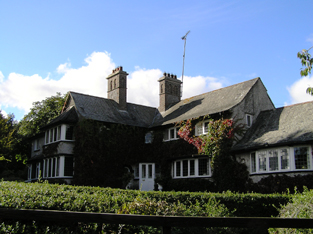 Influenced by the late nineteenth-century movement concerned with the promotion of traditional styles incorporating natural materials in the face of increasing industrialisation and mass-production County Kilkenny boasts a number of Art-and-Crafts-style buildings with the majority concentrated about the city area. Foremost amongst these are the houses, both large and small that make up the Talbotsinch Village enclave developed from 1896 by Ellen Odette Desart (née Bischoffsheim), fourth Countess of Desart (1857-1933).
Influenced by the late nineteenth-century movement concerned with the promotion of traditional styles incorporating natural materials in the face of increasing industrialisation and mass-production County Kilkenny boasts a number of Art-and-Crafts-style buildings with the majority concentrated about the city area. Foremost amongst these are the houses, both large and small that make up the Talbotsinch Village enclave developed from 1896 by Ellen Odette Desart (née Bischoffsheim), fourth Countess of Desart (1857-1933).
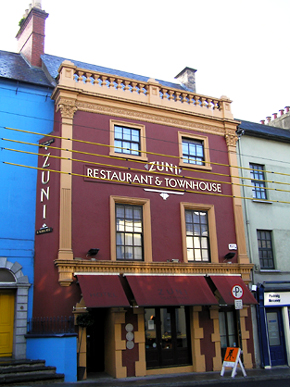 Bequeathing a legacy that had a lasting impact throughout the twentieth century the Desarts of Desart Court ranked amongst the most influential of the landed gentry in County Kilkenny. Ellen Odette Desart (née Bischoffsheim), fourth Countess of Desart (1857-1933) in particular helped to shape much of the cultural life of the city through the promotion of industry at Talbotsinch Village (1869-1904), the establishment of the Kilkenny Theatre (1903), the opening of the library (1910), the founding of a hospital (1915) in honour of her brother-in-law Otway Frederick Seymour Cuffe (1853-1915), and so on. Desart Court (1773), the family home, was burnt in 1923 and subsequently demolished.
Bequeathing a legacy that had a lasting impact throughout the twentieth century the Desarts of Desart Court ranked amongst the most influential of the landed gentry in County Kilkenny. Ellen Odette Desart (née Bischoffsheim), fourth Countess of Desart (1857-1933) in particular helped to shape much of the cultural life of the city through the promotion of industry at Talbotsinch Village (1869-1904), the establishment of the Kilkenny Theatre (1903), the opening of the library (1910), the founding of a hospital (1915) in honour of her brother-in-law Otway Frederick Seymour Cuffe (1853-1915), and so on. Desart Court (1773), the family home, was burnt in 1923 and subsequently demolished.
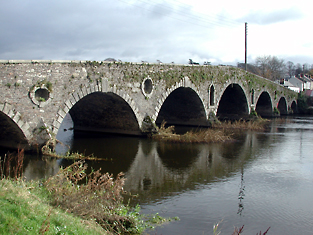 Following the Great Flood of 1763 that washed away many of the substantial bridges crossing the River Nore a comprehensive rebuilding programme was initiated, the results of which have been passed down to the present day as an important element of the civil engineering or transport heritage of County Kilkenny. Many of the bridges built to designs prepared by George Smith (fl. 1763-7), a pupil of George Semple (c.1700-82) feature Classical detailing indicating the lasting influence of the illustrations included in Andrea Palladios (1508-80) I Quattro Libri (1570). Records for further examples of bridges dating from the eighteenth, the nineteenth, and the twentieth centuries are viewable by selecting the bridge category from the drop-down menu in the Advanced Search section of this webpage.
Following the Great Flood of 1763 that washed away many of the substantial bridges crossing the River Nore a comprehensive rebuilding programme was initiated, the results of which have been passed down to the present day as an important element of the civil engineering or transport heritage of County Kilkenny. Many of the bridges built to designs prepared by George Smith (fl. 1763-7), a pupil of George Semple (c.1700-82) feature Classical detailing indicating the lasting influence of the illustrations included in Andrea Palladios (1508-80) I Quattro Libri (1570). Records for further examples of bridges dating from the eighteenth, the nineteenth, and the twentieth centuries are viewable by selecting the bridge category from the drop-down menu in the Advanced Search section of this webpage.
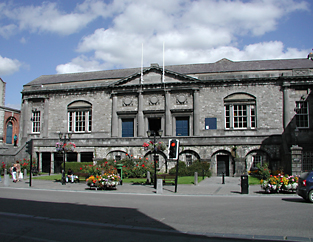 Unlike in many of the neighbouring counties, Kilkenny features the work of few renowned architects of the ilk of Sir Richard Morrison (1767-1849) or Augustus Welby Northmore Pugin (1812-52). However, having won numerous commissions in the private, the public, and the ecclesiastical sectors the legacy of William Robertson (1770-1850) enriches the architectural heritage of the county.
Unlike in many of the neighbouring counties, Kilkenny features the work of few renowned architects of the ilk of Sir Richard Morrison (1767-1849) or Augustus Welby Northmore Pugin (1812-52). However, having won numerous commissions in the private, the public, and the ecclesiastical sectors the legacy of William Robertson (1770-1850) enriches the architectural heritage of the county.
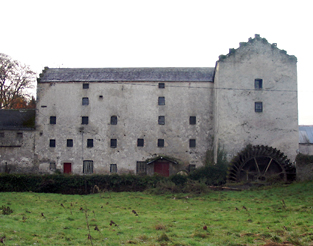 Supported by the rivers Nore and Barrow together with the innumerable associated tributaries, Kilkenny possesses a fine collection of mills, both substantial and small-scale, that have long-supported the rural agricultural economy of the county. Exhibiting an impressive scale, a cluster of mills in the Kells area have origins dating back to the early twelfth century. Records for further examples of mills dating from the eighteenth, the nineteenth, and the twentieth centuries are viewable by selecting the mill category from the drop-down menu in the Advanced Search section of this webpage.
Supported by the rivers Nore and Barrow together with the innumerable associated tributaries, Kilkenny possesses a fine collection of mills, both substantial and small-scale, that have long-supported the rural agricultural economy of the county. Exhibiting an impressive scale, a cluster of mills in the Kells area have origins dating back to the early twelfth century. Records for further examples of mills dating from the eighteenth, the nineteenth, and the twentieth centuries are viewable by selecting the mill category from the drop-down menu in the Advanced Search section of this webpage.
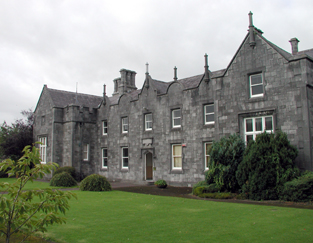 Resting on a bed of grey carboniferous limestone it is no surprise that Kilkenny features a host of buildings constructed entirely from this material, or at least incorporating decorative dressings exhibiting particularly fine stone masonry including doorcases, sills, and suchlike. Although the sites included in this Survey Highlight are located primarily in or around the city area, limestone features widely across the entire county.
Resting on a bed of grey carboniferous limestone it is no surprise that Kilkenny features a host of buildings constructed entirely from this material, or at least incorporating decorative dressings exhibiting particularly fine stone masonry including doorcases, sills, and suchlike. Although the sites included in this Survey Highlight are located primarily in or around the city area, limestone features widely across the entire county.
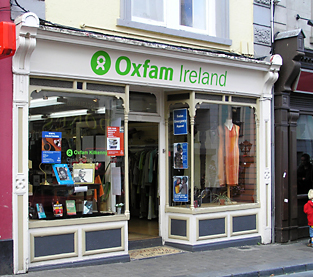 Notwithstanding the commercial pressures following the economic boom period of the 1990s and 2000s the architectural heritage of County Kilkenny features a collection of pubfronts and shopfronts dating from the nineteenth and twentieth centuries, all of which make a pleasant visual impact in the streetscape. Of particular interest is the model (1904) at P.T. Murphy in the High Street, Kilkenny, which survives as the last known shopfront executed by the Kilkenny Woodworkers Company. Records for further examples of pubfronts and shopfronts are viewable by selecting the public house or the shop/retail outlet categories from the drop-down menu in the Advanced Search section of this webpage.
Notwithstanding the commercial pressures following the economic boom period of the 1990s and 2000s the architectural heritage of County Kilkenny features a collection of pubfronts and shopfronts dating from the nineteenth and twentieth centuries, all of which make a pleasant visual impact in the streetscape. Of particular interest is the model (1904) at P.T. Murphy in the High Street, Kilkenny, which survives as the last known shopfront executed by the Kilkenny Woodworkers Company. Records for further examples of pubfronts and shopfronts are viewable by selecting the public house or the shop/retail outlet categories from the drop-down menu in the Advanced Search section of this webpage.
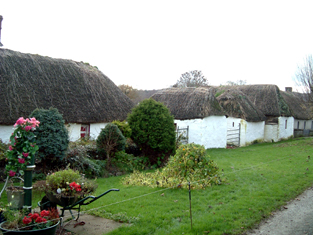 Unlike in many other counties where the stock has been diminished to the point of extinction over the course of the twentieth century, Kilkenny retains a number of thatched cottages and sundry ranges representing the vernacular legacy of the county. Having traditionally been promoted as an integral component of the culture of Ireland the vernacular heritage features characteristics such as a construction from locally-available materials including, in the case of County Kilkenny, thatch gleaned from the banks of the river Nore and Barrow.
Unlike in many other counties where the stock has been diminished to the point of extinction over the course of the twentieth century, Kilkenny retains a number of thatched cottages and sundry ranges representing the vernacular legacy of the county. Having traditionally been promoted as an integral component of the culture of Ireland the vernacular heritage features characteristics such as a construction from locally-available materials including, in the case of County Kilkenny, thatch gleaned from the banks of the river Nore and Barrow.
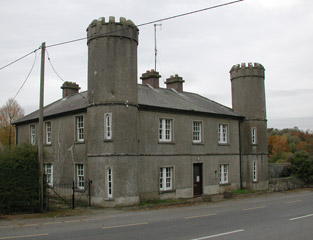 Forming the centrepiece of many of the towns and villages throughout the county, Kilkenny features a number of very fine civic or public buildings with a variety of architectural styles indicating the fashions of the period: the cool sophistication of the Gowran Courthouse (1855-6) for instance stands in contrasts against the fantastical fairytale-like Gothicisim of the contemporary (c.1850) Bennettsbridge Garda Síochána Station. Meanwhile, twentieth-century social housing schemes in the city exhibit a pleasing, if economic approach to architectural design distinction.
Forming the centrepiece of many of the towns and villages throughout the county, Kilkenny features a number of very fine civic or public buildings with a variety of architectural styles indicating the fashions of the period: the cool sophistication of the Gowran Courthouse (1855-6) for instance stands in contrasts against the fantastical fairytale-like Gothicisim of the contemporary (c.1850) Bennettsbridge Garda Síochána Station. Meanwhile, twentieth-century social housing schemes in the city exhibit a pleasing, if economic approach to architectural design distinction.
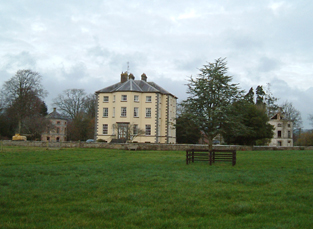 Standing out among the many country house estates dating from the eighteenth and nineteenth centuries the Belline House estate, at one time associated with the nearby Bessborough House estate, represents a remarkably intact complex where each range, regardless of function was fully developed as an aesthetically pleasing architectural composition. The pavilions framing the main house, the rustic lodge, the “Inkpot” or “Turret” lodge, and so on, all contribute significantly to the pleasing visual statement made by the collective estate in the local landscape.
Standing out among the many country house estates dating from the eighteenth and nineteenth centuries the Belline House estate, at one time associated with the nearby Bessborough House estate, represents a remarkably intact complex where each range, regardless of function was fully developed as an aesthetically pleasing architectural composition. The pavilions framing the main house, the rustic lodge, the “Inkpot” or “Turret” lodge, and so on, all contribute significantly to the pleasing visual statement made by the collective estate in the local landscape.
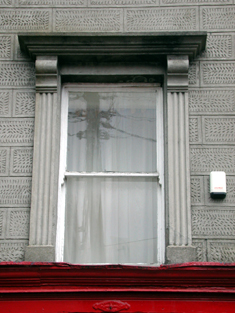 Representing a characteristic particular to Graiguenamanagh a number of sites throughout the town incorporate an inscribed pattern to the wall surface mimicking, in render, the effect of tooled County Kilkenny limestone or suchlike. Often overlooked by the casual passer-by it is these details that make an important impact on the individual character of the built heritage of an area.
Representing a characteristic particular to Graiguenamanagh a number of sites throughout the town incorporate an inscribed pattern to the wall surface mimicking, in render, the effect of tooled County Kilkenny limestone or suchlike. Often overlooked by the casual passer-by it is these details that make an important impact on the individual character of the built heritage of an area.
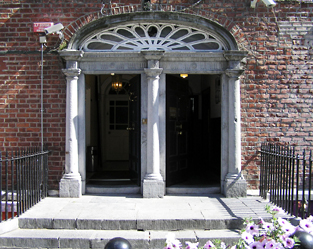 In addition to the so-called Kilkenny Window, a bipartite window arrangement occurring in a number of sites across the city, the architecture of Kilkenny City features a further characteristic particular to the locality in the form of a shared doorcase. In Wellington Square and Chapel Lane a simple version sees two door openings set within a shared recess while in Parliament Street and John Street the doorcases incorporate richly carved dressings in County Kilkenny limestone.
In addition to the so-called Kilkenny Window, a bipartite window arrangement occurring in a number of sites across the city, the architecture of Kilkenny City features a further characteristic particular to the locality in the form of a shared doorcase. In Wellington Square and Chapel Lane a simple version sees two door openings set within a shared recess while in Parliament Street and John Street the doorcases incorporate richly carved dressings in County Kilkenny limestone.